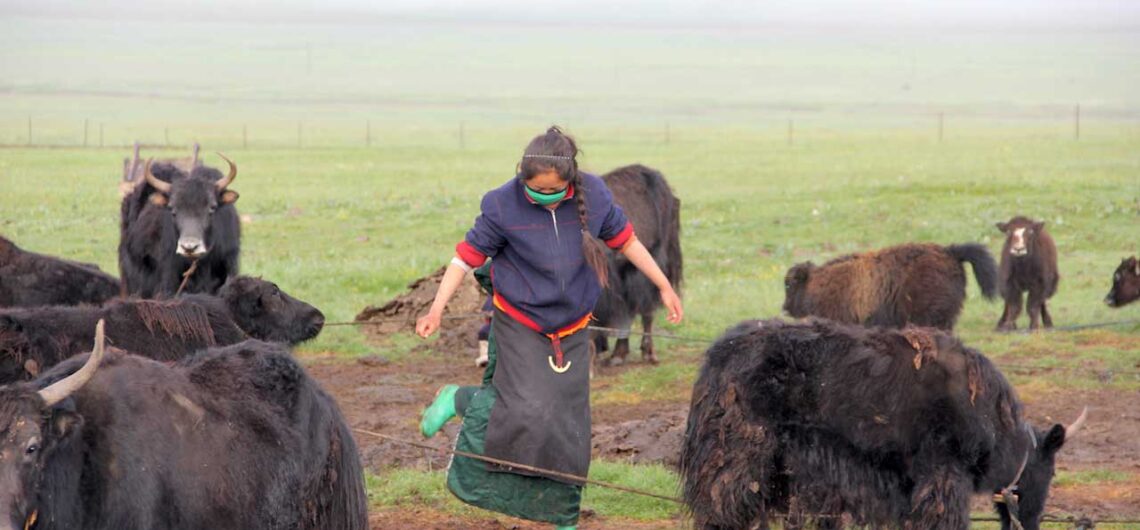
Your Guide to Amdo Travel
The Amdo region of Tibet is a stunningly beautiful and vast area stretching from the Okhamandal region in western Tibet to the Dzachuka Valley in the east. It’s home to some of the most spectacular Tibetan monasteries, alpine lakes, high-altitude grasslands, and desolate deserts. For those who are looking for a unique travel experience that combines culture, nature, and adventure, Amdo is undoubtedly one of the best places to explore. In this guide to Amdo travel, we’ll go over everything you need to know before planning a trip there. We’ll discuss the best times to visit Amdo, what to expect when you arrive, how to get around safely and comfortably, plus plenty more tips for making your journey memorable. From 2024, 6 nationalities are declared a 15 day visa free, please check our Chinese Visa details.
History of Amdo Tibet
Amdo is a region in northeastern Tibet. It is the birthplace of the Dalai Lama and home to some of the most beautiful scenery in Tibet. Amdo has a long history dating back to pre-Buddhist times. The region was once an important center of trade and culture, and played a significant role in Tibetan history.
In the 7th century, Amdo was annexed by the Tibetan Empire. The region remained under Tibetan rule until the 13th century when it was conquered by the Mongols. During the Mongol period, Amdo became an important commercial hub, linking Tibet with China and the outside world. Trade flourished and Amdo became known for its fine horses and textiles.
In the 18th century, Amdo came under Chinese control during the Qing dynasty. The Manchu rulers imposed their own culture and administration on the region, which led to considerable conflict with the local Tibetan population. In 1911, Amdo briefly regained its autonomy during the Xinhai Revolution when Chinese rule collapsed. However, Tibetan independence was short-lived and in 1949, Amdo was annexed by communist China.
Since then, Amdo has been subject to strict Chinese control. The regional capital of Xining has been developed as a major industrial center while much of rural Amdo remains poor and underdeveloped. In recent years, there have been sporadic protests against Chinese rule in Amdo, but these have been met with harsh repression from Beijing.
The People of Amdo
The people of Amdo are a proud and resilient bunch. They have a long history of being fiercely independent, and this is reflected in their culture and way of life.
The Amdo people are hospitable and welcoming, but they can also be fiercely protective of their land and way of life. This is a region that has seen much upheaval over the centuries, and the people have had to adapt and change in order to survive.
Today, the Amdo people are still very connected to their traditional way of life. They are hardy souls who know how to make the most of what they have. If you’re lucky enough to travel to Amdo, you’ll be able to experience this unique culture first-hand.
Religion in Amdo
The Tibetan Plateau is home to some of the world’s highest mountains, and also to the largest concentration of Tibetan Buddhist monasteries. Amdo, in particular, is known for its large number of monasteries and temples.
Religion plays a very important role in the lives of the people of Amdo. Tibetan Buddhism is the main religion, and most people in Amdo practice Tibetan Buddhism. There are many different schools of Tibetan Buddhism, but all share the same basic beliefs and practices.
Tibetan Buddhists believe in rebirth (samsara), and that it is possible to achieve liberation from suffering (nirvana). They also believe in karma, or the law of cause and effect. This means that actions have consequences, both good and bad. Good actions lead to happiness and bad actions lead to suffering.
Tibetan Buddhists follow the teachings of the Buddha, which include ethical principles such as non-violence (ahimsa) and compassion (karuna). They also practice meditation as a way to gain insights into reality and achieve enlightenment.
Amdo is home to many different monasteries and temples where Tibetans can go to worship, learn about their religion, or meditate. Some of the most famous monasteries in Amdo include Kumbum Monastery, Labrang Monastery, Shachung Monastery, and Gomlung Monastery. Check our Qinghai tour that covering most best places for valuable Amdo travel.
Culture and Customs
Amdo is a Tibetan region in China with a rich culture and history. The people of Amdo are friendly and welcoming, and the region is known for its beautiful scenery. There are many things to see and do in Amdo, and visitors will find that there is much to learn about the culture and customs of this fascinating place.
When travelling to Amdo, it is important to be respectful of the local culture and customs. Here are some tips to help you do just that:
- Dress conservatively – this means no shorts or sleeveless shirts for men, and no short skirts or revealing tops for women;
- Remove your shoes when entering a monastery or someone’s home;
- Be mindful of your behaviour – don’t touch statues or paintings, nor point your feet at someone;
- Speak quietly and respectfully;
- Don’t take photos of people without their permission;
- Finally, remember that a little bit of patience goes a long way!
What to See and Do in Amdo Travel
Amdo is a region in the Tibetan Plateau that covers parts of Qinghai Province, Gansu Province and the Tibet Autonomous Region. It is known for its high altitude, rugged mountains and grasslands. Amdo is home to many Tibetan Buddhist monasteries and temples, as well as natural attractions such as lakes, hot springs and forests.
There are plenty of things to see and do in Amdo, whether you’re interested in religious sites, natural beauty or simply exploring Tibetan culture. Some of the most popular attractions include:
– Monasteries and temples: Amdo is home to many important Tibetan Buddhist monasteries, such as Kumbum Monastery, Labrang Monastery and Drepung Monastery. These religious sites are not only beautiful, but also offer insight into the Tibetan way of life.
– Lakes: Amdo’s high altitude makes for some stunning lakes, including Qinghai Lake (one of Tibet’s largest lakes)
– Hot springs: The region’s hot springs are said to have healing properties, and are a popular tourist attraction. The most well-known hot spring is Chaudangri Hot Spring, which is located near Darlag County.
– Grasslands: Amdo’s grasslands are perfect for a scenic hike or horseback ride.
Planning Your Trip to Amdo
Planning your trip to Amdo does not have to be difficult. There are a few key things to keep in mind when planning your trip, and following these tips will help ensure that you have a great experience.
First, research is key. Be sure to read up on Amdo before you go – familiarize yourself with the culture, the history, and the geography of the region. This will help you make the most of your time while you’re there.
Second, choose your itinerary carefully. Amdo is a large region, and there is a lot to see and do. Try to focus on one area at a time, and plan your activities and sightseeing accordingly.
Third, book your accommodation and transportation in advance. This will save you time and money, and it will also give you peace of mind knowing that everything is taken care of before you even arrive.
Finally, be prepared for altitude sickness. Amdo sits at high altitude, so it’s important to take this into account when planning your trip. Drink plenty of fluids, eat light meals, and take it easy for the first few days until you adjust to the thinner air. Check what to do in Qinghai Province.
By following these simple tips, you can be sure that your trip to Amdo will be enjoyable and hassle-free!
Conclusion
Amdo is an incredible place to visit, with its stunning natural scenery and distinct cultural heritage. With our guide as a resource, you can plan your perfect Amdo travel without breaking the bank. We have provided you all the information you need on transportation, accommodation options, attractions and activities in Amdo; armed with this knowledge, you are now ready to embark on an amazing journey of discovery! Visit our office location in Tibet.
